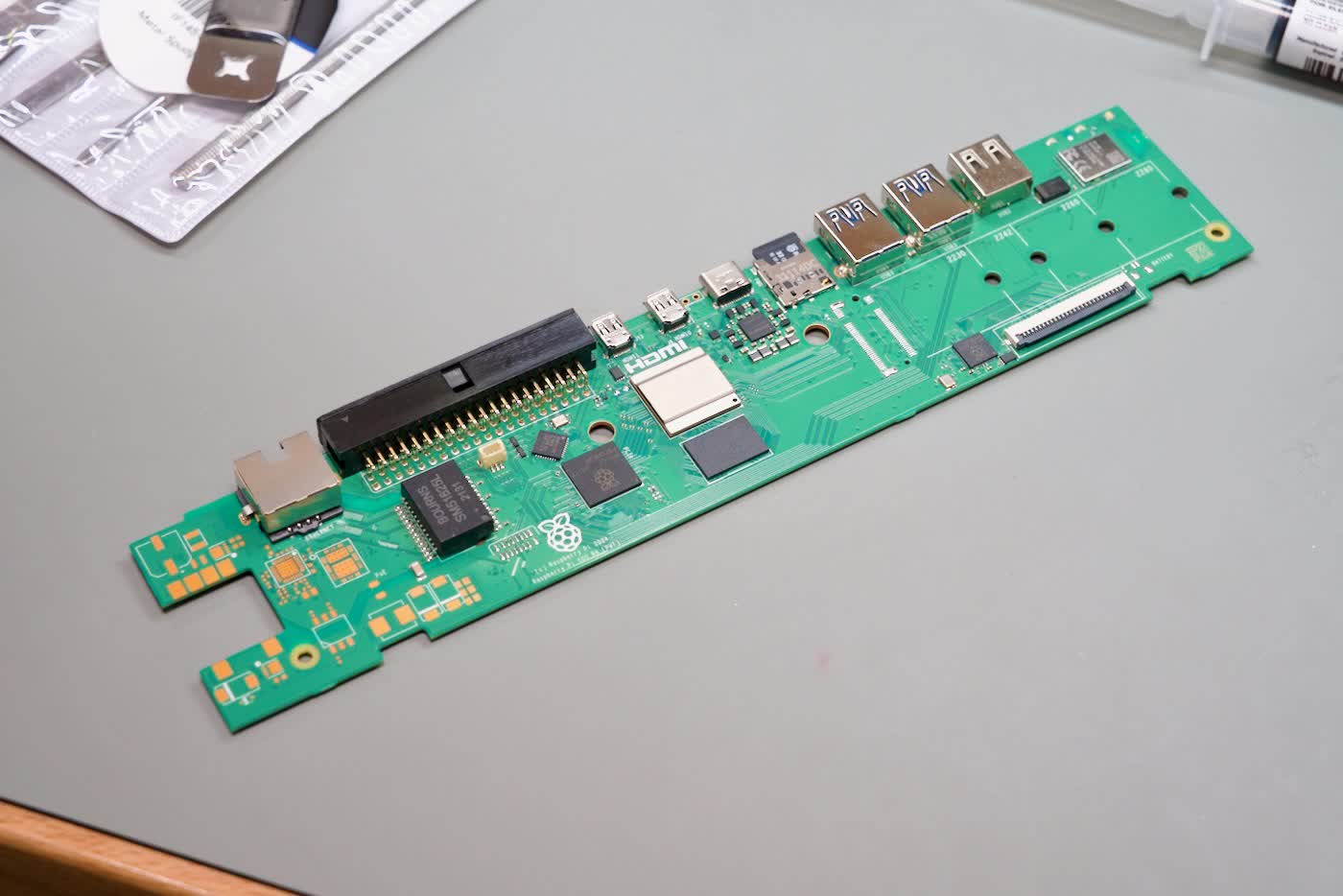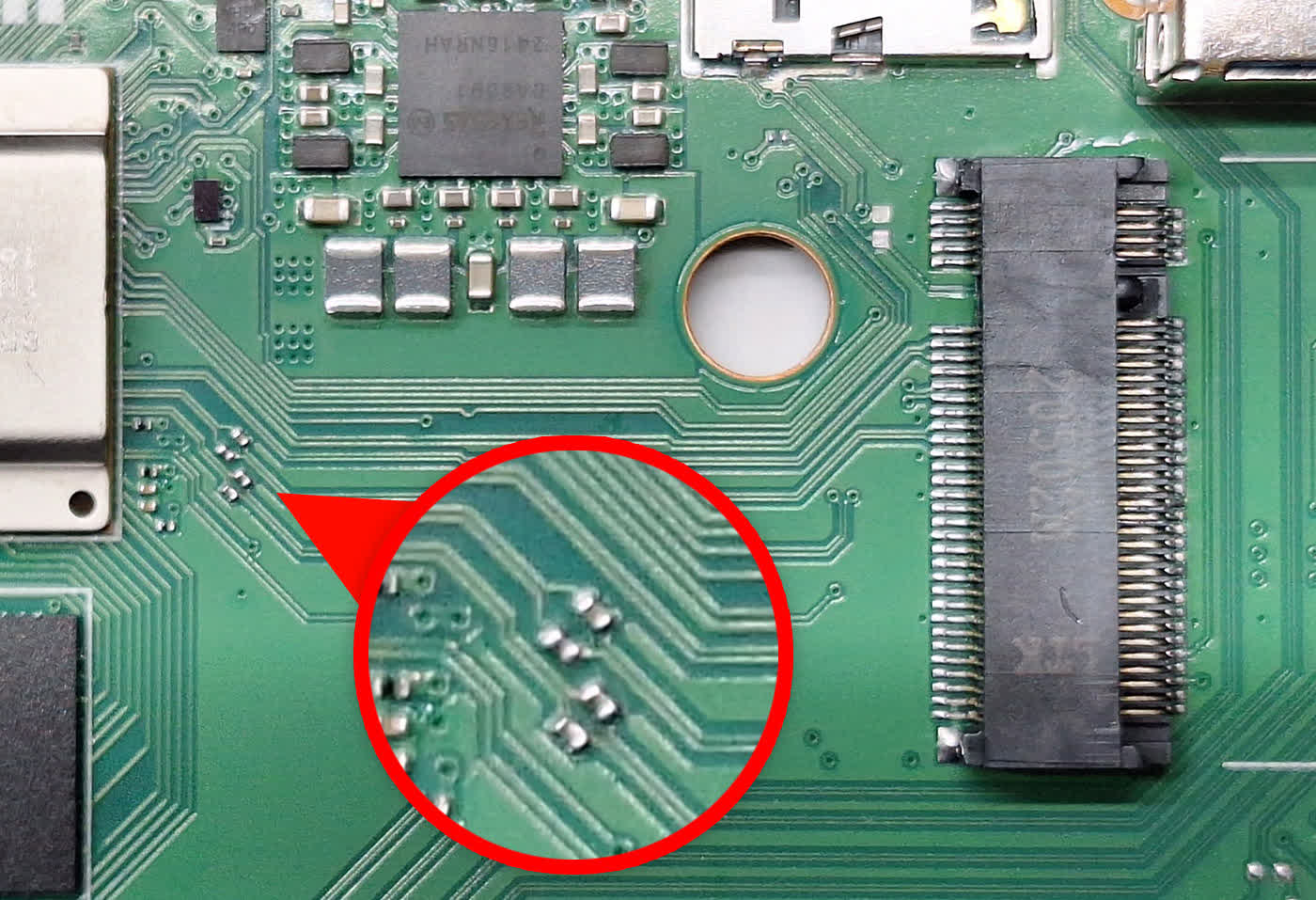In context: The Raspberry Pi Foundation’s latest release, the Pi 500 Keyboard PC, integrates the powerful Raspberry Pi 5 into a sleek, compact keyboard design. The innovative form factor positions the Pi 500 as a potential game-changer for casual computing and light productivity tasks. However, the lack of NVMe M.2 storage support prevents it from reaching its full potential.
The omission is a deliberate choice to keep costs as low as possible, with the unit priced at just $90. Instead, the device includes a 32GB Class A2 microSD card, which should suffice for most tasks. However, microSD storage is notably slower, and an NVMe upgrade could significantly boost performance.
Interestingly, the device features what appears to be an M.2 slot, but it lacks the actual socket needed to use it.

The highly resourceful Raspberry Pi community took the challenge head-on, and succeeded.
The story began when an anonymous Pi 500 enthusiast reached out to Jeff Geerling, a developer and popular tech YouTuber, with instructions for breathing new life into the device’s unused PCB header.
Geerling detailed the modder’s insights in a blog post published on December 13. The process involves soldering several tiny capacitors onto the PCIe lines connected to the M.2 slot. It’s no simple task, requiring a steady hand, a quality microscope, and advanced surface-mount soldering skills.

Once the capacitors are in place, the next step is installing the M.2 socket itself, which Geerling describes as “comparatively easy.”
Another crucial step involves connecting an external bench power supply. This additional voltage powers the installed M.2 slot and its components, enabling the Pi 500 to finally recognize and utilize NVMe storage.
However, the bench power supply proved to be unnecessary. After experimenting with the DC/DC converter located on the backside of the PCB, the modder discovered a way to power the NVMe drive entirely using the Pi 500’s internal power supply.
Just got the M.2 slot on my Raspberry Pi500 populated and working. I’m working on pulling together a Digikey list of the parts I needed to pull this off. @geerlingguy @Raspberry_Pi pic.twitter.com/DgJx7xIGtW
– Samuel Hedrick (@ChoptecOfficial) December 15, 2024
And sure enough, another user, @ChoptecOfficial, successfully assembled the entire circuit, demonstrating that an NVMe SSD can indeed run off the Pi 500’s internal power supply.
For those daring enough to tackle this mod, a word of caution: you’ll need the right soldering tools and significant experience with precision electronics repair and modification. However, the chance to unlock the full potential of the Raspberry Pi 500 keyboard PC might make the challenge worthwhile.
If you’re ready to give it a shot, Geerling’s blog provides a step-by-step guide to help you along the way.
Image credit: Jeff Geerling







Leave a Comment